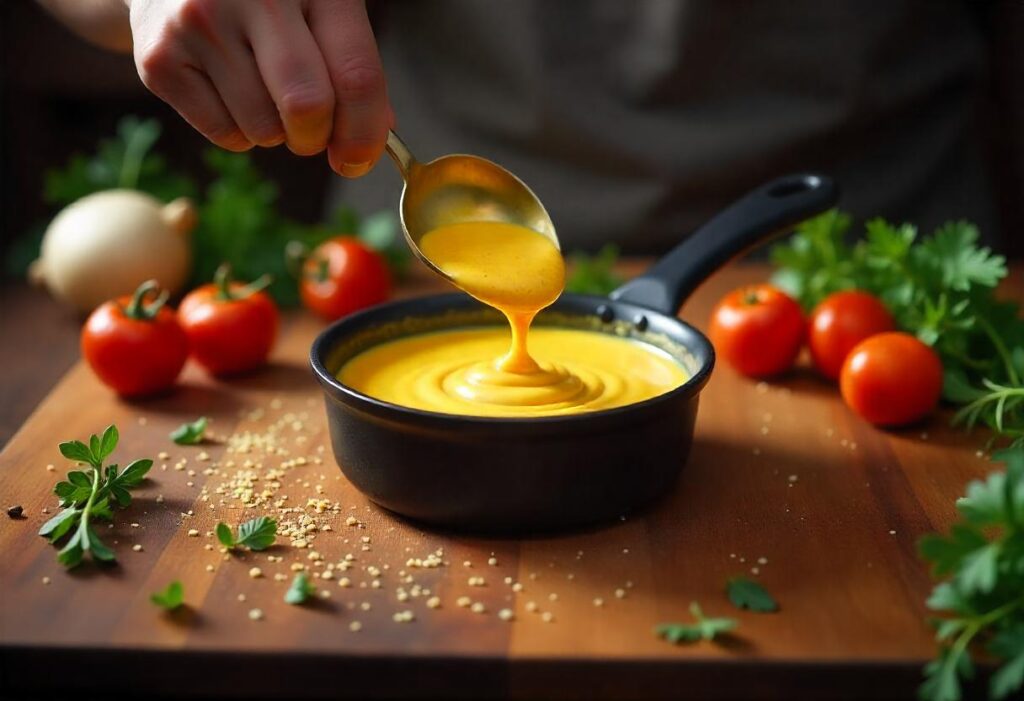Introduction
When you think of Japanese cuisine, elegance, harmony, and balanced flavors come to mind. Among its culinary gems, japanese barbecue sauce recipes stand out for transforming simple grilled foods into gourmet delights. Whether you’re marinating succulent meats or glazing fresh vegetables, these sauces add depth, complexity, and that signature Japanese umami flair.
From the sweetness of mirin to the savory richness of soy sauce, Japanese barbecue sauces blend traditional ingredients with global inspirations. They pair beautifully with meats, fish, tofu, or even as a dipping sauce. For a broader perspective on Japanese grilling techniques, consider authentic Japanese short ribs as another route to flavor exploration.
In this guide, you’ll uncover the history behind these sauces, discover key ingredients, master preparation methods, and learn how to personalize each recipe. By the end, you’ll have the skills to craft your own japanese barbecue sauce recipes at home, delighting your guests and your palate alike.

Section 1: History and Background
From Subtle Beginnings to Grilling Influences
Before grilling took root in Japan, culinary traditions centered on subtle flavors—dashi, miso, soy—without heavy emphasis on meats. The Meiji Restoration introduced Western eating habits, expanding Japan’s gastronomic landscape. As sizzling grills gained popularity, condiments evolved to complement these smoky, savory preparations. Early attempts combined soy sauce, mirin, and sugar, creating a sweeter, more delicate alternative to Western barbecue sauces.
Evolving into Modern Classics
By the mid-20th century, chefs refined these concepts into sauces that balanced salt, sweet, and umami. Teriyaki and tare emerged as household names, each contributing to a repertoire of japanese barbecue sauce recipes that offered caramelized finishes and layered flavors. Regions innovated, adding local ingredients for unique twists. With Japan’s global culinary recognition on the rise, travelers and home cooks embraced these versatile sauces.
Today, these sauces represent the fusion of tradition and adaptation. They harmonize heritage flavors with modern grilling techniques, blending seamlessly into Japanese

Section 2: Key Ingredients and Flavor Profile
Core Components of Japanese Barbecue Sauces
At the heart of japanese barbecue sauce recipes lie a handful of essential ingredients: soy sauce for savory depth, mirin for gentle sweetness, sake for complexity, and sugar (or honey) for balance. Ginger and garlic add subtle warmth and aroma. Sometimes, a touch of dashi stock enhances umami, while a spoonful of miso paste contributes richness.
Balancing Flavors and Quality
Japanese sauces prioritize harmony. No single note overshadows another. Unlike Western sauces that might lean heavily on smoke or vinegar, Japanese versions weave flavors together smoothly. High-quality ingredients matter—naturally brewed soy sauce, real mirin, and a decent sake elevate your final product. Fresh ginger and garlic ensure a cleaner, more refined result.
For authenticity, shop at trusted Asian grocers or explore reputable brands. Adjust ingredient ratios to your taste: add more mirin for brightness, or a bit of miso for a richer undertone. This adaptability lets you tailor each sauce to suit various proteins and dishes, ensuring your creations capture the essence of Japanese cuisine—delicate, layered, and deeply satisfying.

Section 3: Crafting a Classic Japanese Barbecue Sauce
Preparing the Base Mixture
To start a classic japanese barbecue sauce recipe, combine soy sauce, mirin, and sake in a small saucepan. Add sugar or honey to achieve the desired sweetness, then introduce aromatics like ginger and garlic. Allow the mixture to simmer gently, reducing until it thickens to a syrupy consistency. Taste as you go, adjusting seasoning or adding a splash of dashi if desired.
Adjusting and Storing Your Sauce
Once you’re satisfied with the flavor, cool the sauce and transfer it to a clean jar. Stored in the fridge, it keeps well for about a week. This versatile condiment can glaze chicken skewers, brush onto grilled salmon, or drizzle over roasted vegetables. For more ideas, check out these Japanese BBQ sauce chicken recipes—notice how small ingredient tweaks produce distinct outcomes.
Over time, you’ll gain confidence and experiment with ratios. Make it sweeter or saltier to match your preferences. The beauty of mastering a base sauce lies in its potential for variation—once you understand the fundamentals, you can craft sauces that align perfectly with your culinary vision.


Section 4: Practical Examples and Use Cases
Everyday Meals and Quick Fixes
Japanese barbecue sauce recipes shine in simple weeknight dinners. Marinate chicken thighs overnight, then grill and serve with rice and a light salad. Or brush thick slices of eggplant, zucchini, or king oyster mushrooms with sauce and grill until tender—perfect for a vegetarian feast.
Seafood and Bento Innovations
Glaze salmon or mackerel fillets before broiling, and complement them with pickled ginger and miso soup. In bento boxes, the sauce becomes a versatile dip. Pair it with grilled tofu, blanched greens, or even this comforting mashed Japanese sweet potato recipe to create balanced lunches brimming with flavor.
Global Fusion Experiments
Don’t be afraid to cross culinary boundaries. Blend your barbecue sauce with a bit of chili paste for heat, or add sesame oil for nutty depth. By adapting the sauce to different cuisines, you’ll discover endless ways to incorporate it into your cooking.

Section 5: Pairing & Serving Suggestions
Ideal Proteins and Sides
Japanese barbecue sauce recipes elevate a range of ingredients. Lightly marbled beef or short ribs caramelize beautifully under a glossy coat of sauce—try them with an authentic Japanese short ribs recipe for melt-in-your-mouth perfection. Poultry becomes savory-sweet, while seafood like shrimp or scallops gain complexity with a quick brush of sauce. Vegetarians can marinate tofu or mushrooms for a hearty meal.
Perfect Accompaniments
Go beyond plain rice. Serve grilled foods with Japanese sweet potato, miso soup, or a crisp pickled salad. For seafood enthusiasts, consider pairing sauce-lacquered fish with this Japanese scallop recipe to create a surf-and-turf experience. Presentation matters—plate your dishes on simple white ceramics, garnish with green onions or sesame seeds, and offer extra sauce in a small dipping bowl.
Beverages and Cultural Context
Green tea or chilled barley tea refresh the palate. A dry sake or Japanese beer provides a contrast to the sauce’s richness. Non-alcoholic options like sparkling water with citrus work well too. Remember that these sauces emerged as Japan merged traditional flavors with new cooking methods—every bite reflects centuries of adaptation and culinary artistry.

FAQs
Common Questions About Japanese Barbecue Sauces
Q1: Peut-on préparer la sauce à l’avance ?
Oui. Conservez votre sauce dans un bocal hermétique au réfrigérateur jusqu’à une semaine. Cela facilite les repas rapides.
Q2: Puis-je remplacer le mirin ou le sake ?
Si vous manquez de mirin, utilisez un mélange de vin blanc doux et de sucre. Pour le sake, un vin blanc sec fonctionne, mais la saveur sera moins authentique.
Q3: Comment obtenir une sauce plus épaisse ?
Laissez mijoter plus longtemps pour réduire le liquide ou ajoutez un peu de fécule de maïs diluée. Ajustez ensuite l’assaisonnement.
Q4: Est-ce adapté aux végétariens ou véganes ?
Oui, en évitant les ingrédients dashi à base de poisson. Tofu ou légumes grillés se marient parfaitement avec la sauce.
Q5: Peut-on utiliser la sauce en marinade ?
Absolument. Marinez viande, poisson ou tofu au moins 30 minutes. La sauce imprègne l’aliment, garantissant des saveurs intenses après cuisson.
Q6: Avec quoi accompagner la sauce ?
Servez-la avec salades, légumes vapeur, riz à la japonaise, ou ce plat de bœuf haché japonais pour varier les textures et goûts.
Q7: Les sauces sont-elles toujours sucrées ?
Souvent légèrement sucrées, mais adaptez la quantité de sucre selon votre préférence. Certaines versions privilégient l’umami ou la salinité.

Conclusion
Japanese barbecue sauce recipes exemplify Japan’s culinary ethos: balance, subtlety, and respect for quality ingredients. By mastering the basics, you can tailor these sauces to your tastes—adjusting sweetness, thickness, or aromatics.
Drizzle them over succulent short ribs, marinate chicken for a weeknight feast, or dip grilled vegetables for a vegetarian treat. Each variation celebrates the fusion of tradition and innovation. For more culinary inspiration, consider this easy Japanese tuna salad recipe to expand your understanding of Japanese flavors.
Ultimately, crafting these sauces at home connects you to a rich tapestry of Japanese history and modern global palates. Enjoy the journey, and discover how a well-made sauce can transform a simple meal into something artful and memorable.

